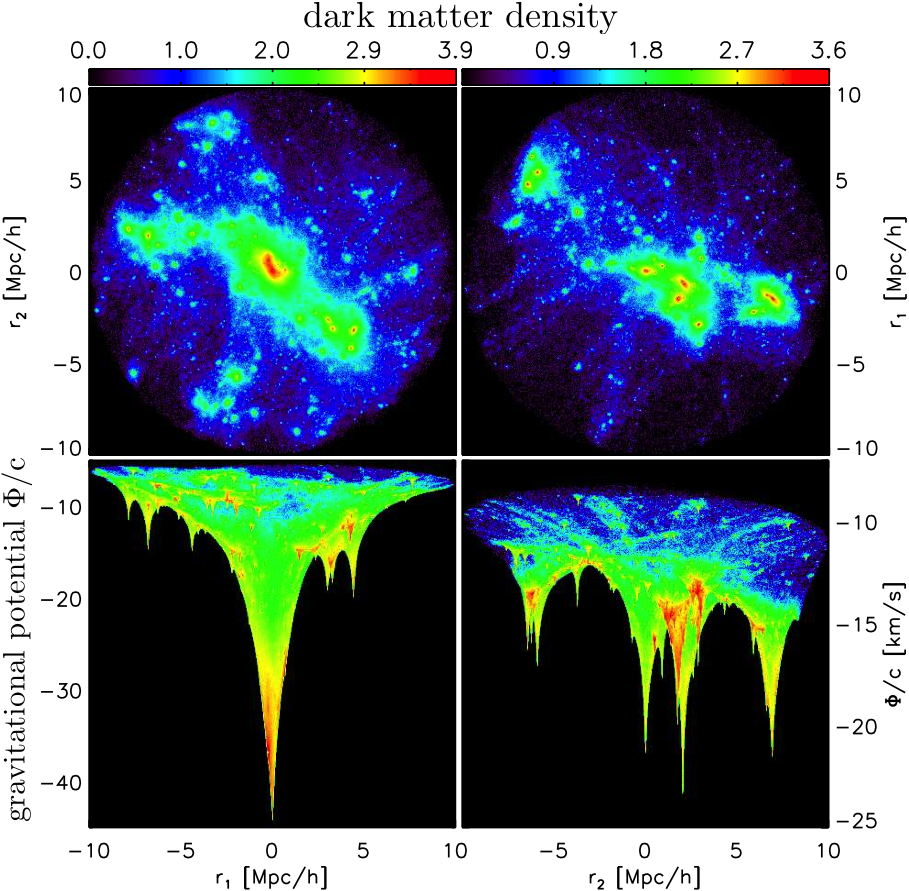Gravitational Redshift from Galaxy Clusters
Gravitational redshift is a prediction from General Relativity. Measuring and modelling such a signal from galaxy clusters is a relatively new frontier in cosmology. Photons from a central galaxy of a galaxy cluster are gravitationally redshifted by a larger amount than other neighbouring galaxies (Figure 1). The signal with respect to the cluster centre, which is proportional to the depth of the potential can be detected by stacking a large sample of clusters. It can be used to test theories of gravity (Wojtak et al. 2011), but there are subtle systematics needed to be addressed (Cai et al. 2016).

Figure 1: The distributions of dark matter around galaxy clusters and their associated landscape of gravitational potential from N-body simulations. Top panels: distributions of dark matter within a 10 Mpc/h radius of the simulated galaxy clusters. The colour displays the relative density of dark matter. Bottom panels: The same regions and colour coding as the top panels but now showing the value of the gravitational potential on the y-axis. The central clusters induce deep potential wells; substructures and neighbouring structures generate local potential minima. Photons from central galaxies sitting at the bottom of the potential well of galaxy clusters are expected to be gravitationally redshifted by a larger amount than satellites and other neighbouring galaxies. The difference of the gravitational redshift signal with respect to the cluster centre is of the order of 10 km/s. It can in principle be detected by stacking a large sample of clusters. (Cai et al. 2016).